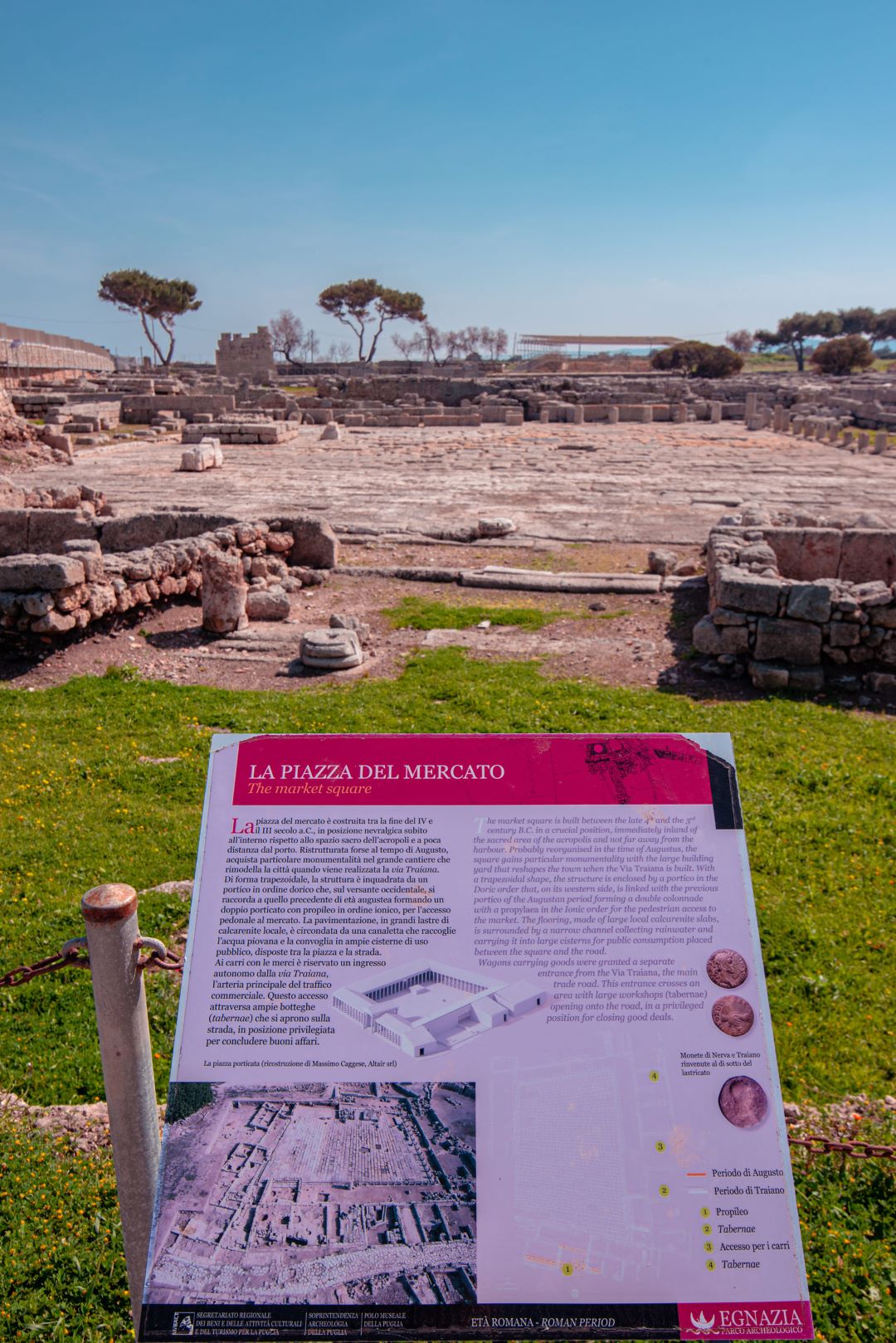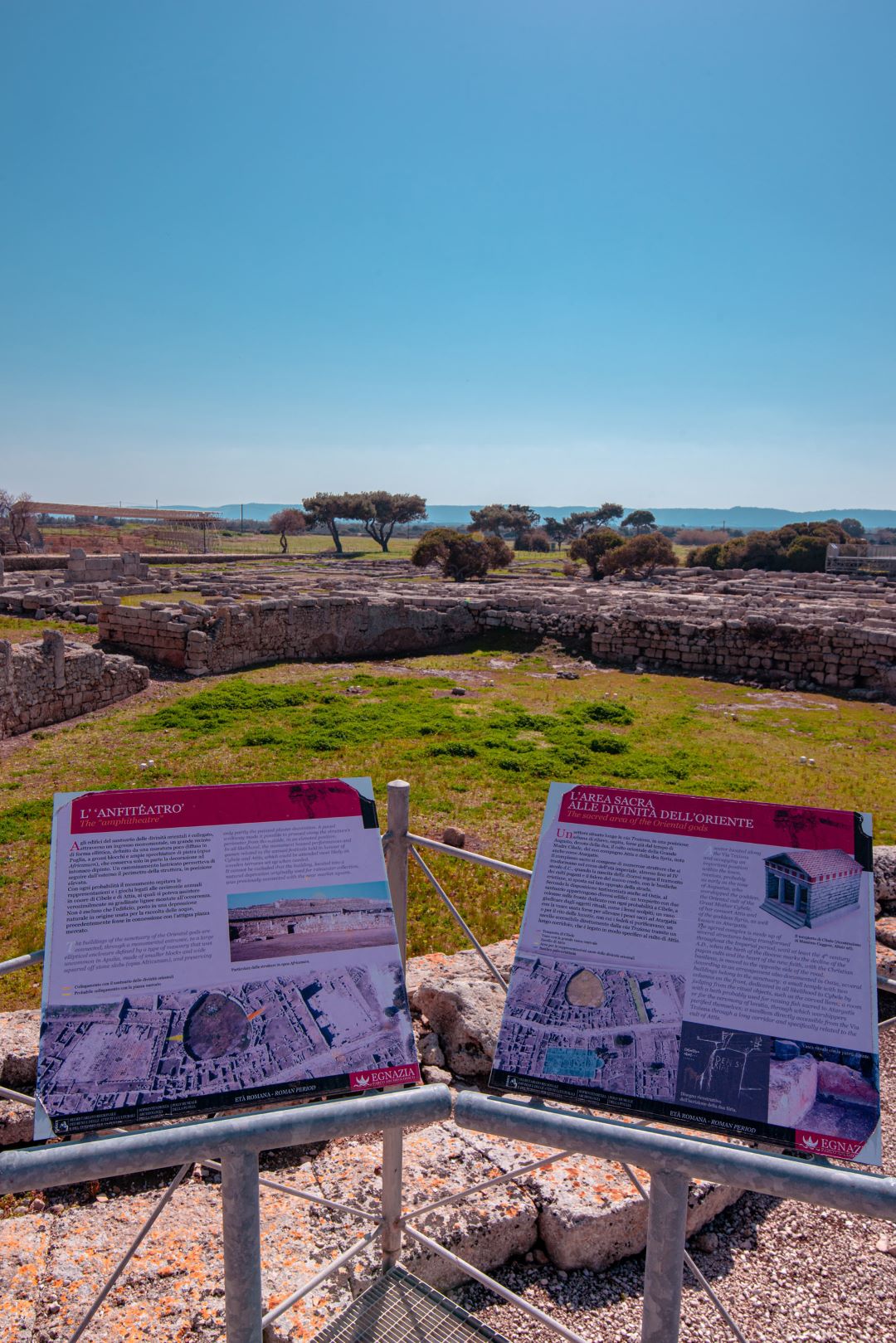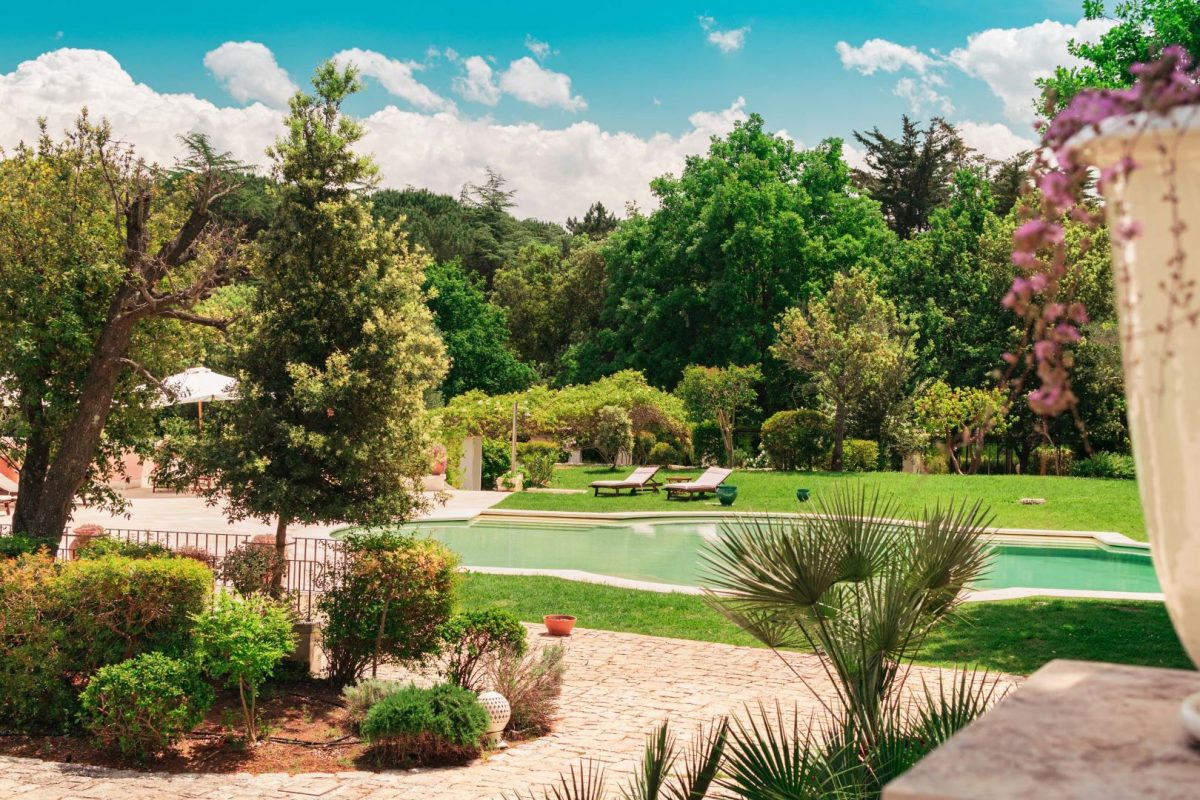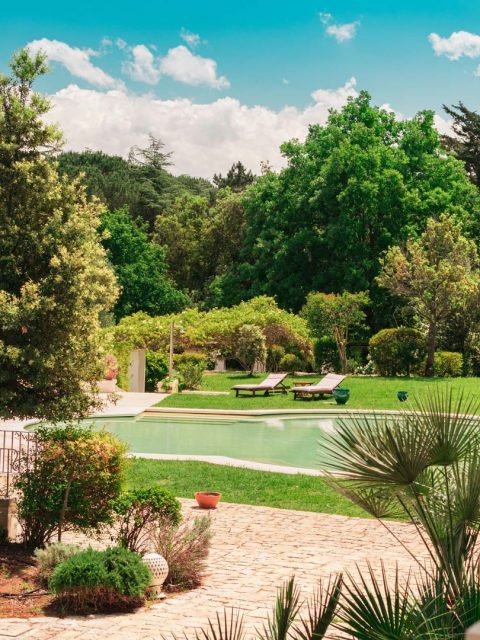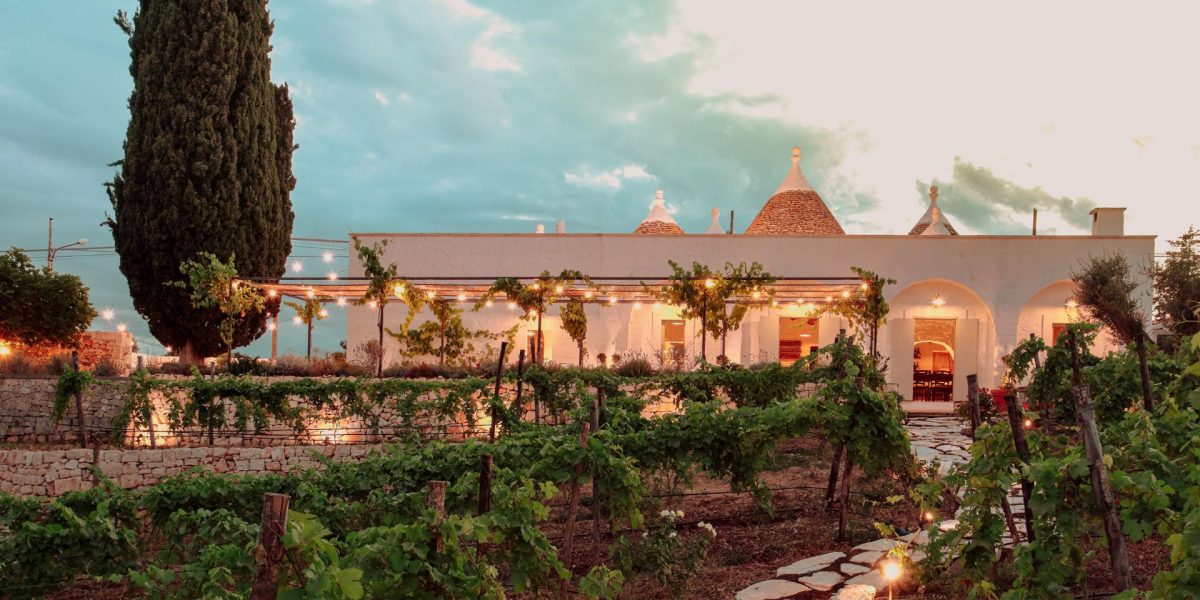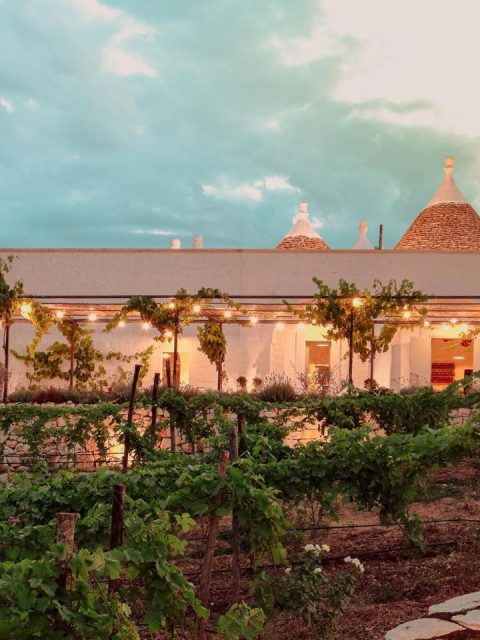Gnatia, better to say Egnazia, is an ancient town located in the Savelletri area (Fasano), founded by Greeks and Messapians. Thanks to his huge port, Egnazia was a crossroad for maritime and Puglia commercial trade.
Continue to read to discover more about this epic place!
The Archaeological Park
The traces of Gnatia across the years can be seen with a tour in the Archaeological Park.
The most important trace of the Roman period was the Trajan Way (Via Traiana), paved during the Trajan era: this road linked Benevento to Brindisi for commercial traffic.
In this area there are also The Baths, equipped with a calidarium, tiepidarium, swimming pool, marble baths, statues, mosaics and sitting rooms used to wait for your turn.
In the Baths area laconicum (our sauna) is visible: this room was used for perspiration baths by dry hot air.
The heat contained in the praefurnia was released both by suspensurae, pipes placed below the floor, and by holes in the hollow perimeter walls.
A masterpiece of engineering!



The Egnazia National Archaeological Museum
Certainly the archaeological park of Egnazia is one of the most interesting Apulian places to visit: here are the testimonies from the Bronze Age to the Medieval one.
Real archaeological investigations began in 1912: nowadays this area is still a site of excavations and archaeological discoveries.
Inside the National Archaeological Museum
The Museum is divided into areas from the Prehistoric Period to the Medieval one.
Talking about the must-see pieces, it’s impossible not to mention the Banquet, a piece that is almost unique: it depicts the lunch that, according to tradition, was always made during and after the burial of the departed ones.
Furthermore, there are the Messapic trozzella pots, which do have roundels called “trozze” applied to their handles.
In the same area there are the Gnathian pots, black pottery with white and yellow decoration, inspired by Greek culture.





To discover more about the Messapic area, watch the video below, done for the Messapic Foundation of the UNPLI Puglia!
The Roman period in the Museum
Speaking of the Roman period (Hadrian era), the statue of Demetra is of particular interest.
According to a legend Demetra, the Greek Goddess of Agriculture, lost her daughter Persephone robbed from Hades, the God of Death.
Demetra became so crazy to find her daughter that she literally lost her head (which is why the statue doesn’t have the head).
Highly valuable in the museum there is also the head of Attis, the lover of Cibele (the Goddess of all Gods), both venerated in the Roman Period.
A nymph skimmed a fruit with her skin and became pregnant with a god: in this way Attis the beautiful, the great love of Cybele, was born.





Puglia ceramic tradition in the Museum
Ceramics were used to store and transport food (oil, wine) in Puglia since the Bronze Age.
In particular ceramic pomegranates formerly were a symbol of prosperity and the afterlife and inside the Museum you can find a lot of beautiful clay pomegranates, also in the tomb walls.
Actually pomegranates are still produced in Puglia: click this link to discover Grottaglie, the Apulian City of Ceramics!
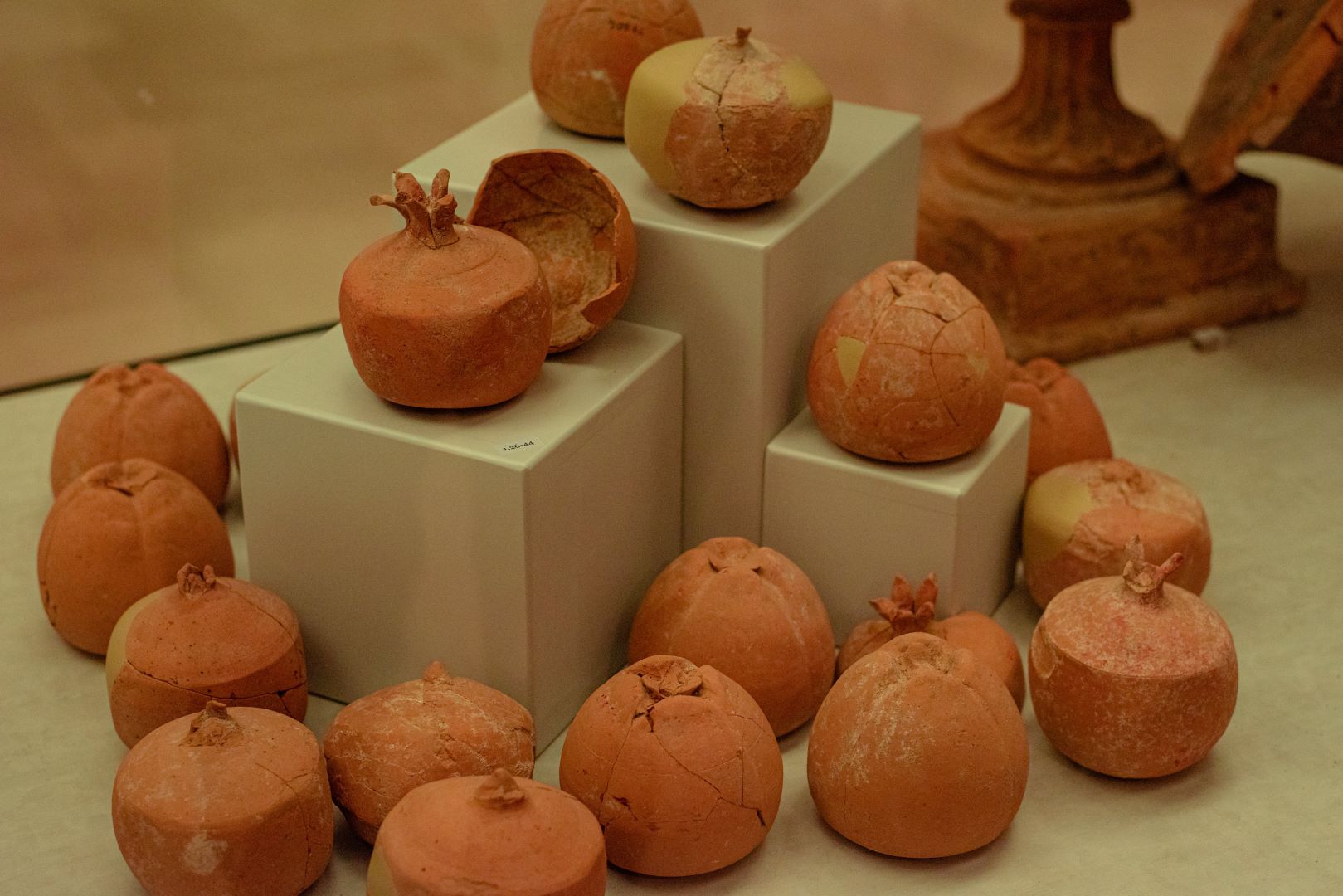
Tips:
Download the EGNAZIA AUDIO GUIDE APP available on Play Store and Apple Store!
Inside the Archaeological Park, there are a lot of spots where, using the app to frame the QR code, you can learn more about what you’re seeing.
The Necropoli Map in the Archaeological Park is tactile to help blind visitors to enjoy the tour!
It is possible to do immersions to discover the ancient ruins of the port of Egnazia, swallowed by the sea.
Great, isn’t it?
And if you want to know other curiosities about Egnazia, don’t forget to see the #5FunFacts on IG! Click here to enjoy!
See you in Puglia!
- Campomarino di Maruggio
- Porto Miggiano
- Casamassima
- Punta Prosciutto beach
- The “Saline” of Margherita di Savoia
- Ostuni the White City
- Umbra Forest
- The Cummerse of Locorotondo
- Trabucchi in Gargano
- Bagnarole in Leuca
- Aeneas’ landing
- Santa Maria di Leuca
- Zinzulusa Caves
- M.A.R.T.A. Taranto
- Bovino’s Ducal Castle
- Castellana Caves
- Egnazia
- Doric Columns
- Taranto Castle
- Grottaglie, art in caves
- Tremiti Islands
- Alberobello Trulli
- Celle di San Vito
- Archaeological Park of Siponto
- Bari city
- Cala Monachile
- Two Sisters Beach
- Poetry Cave
- Castel del Monte
- Sea stacks of Sant'Andrea
- Rocca del Garagnone
- Torre Colimena
- Torre Guaceto
- Alta Murgia
- Bauxite Cave of Spinazzola
- Bauxite Cave of Otranto
What's the weather like there
Fasano weather
Info Points nearby
Fasano
Info point City Centre
Piazza Ciaia, 10
Tel. +39 080 4394182
info@infopointfasano.com
info.fasano@viaggiareinpuglia.it


